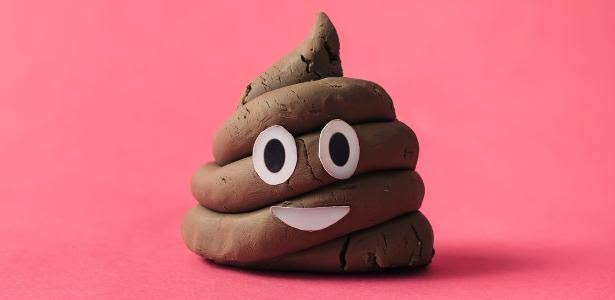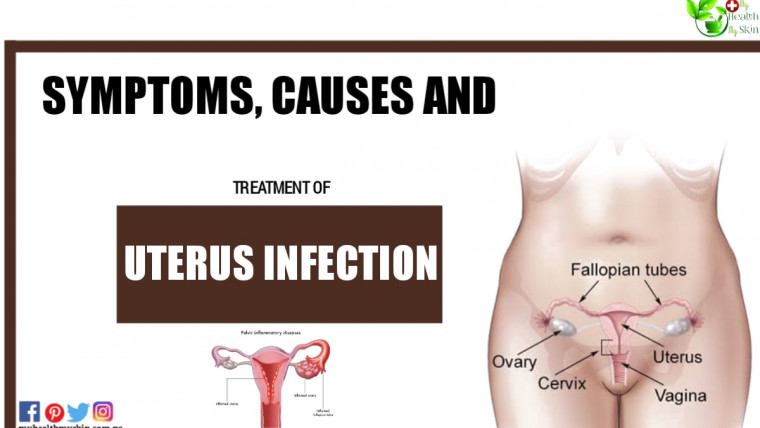Regardless of how beautiful or sweet smelling a person is, it’s a fact that their feces smell bad.
My health my skin has been talking a lot lately about the subject “is sweet smelling poop a sign of diabetes”.
This is something that no human being can escape. But, did you know that the smell of feces can indicate how your intestinal health is going?
Foods like garlic and onions can make stool smell stronger because they contain sulfates, which break down into smelly substances.
There are also beans and legumes, which have enzymes that inhibit their digestion. This generates more gas, and gas doesn’t smell good at all.
Foods high in fat, dairy products, meat and alcoholic beverages are also part of the list of culprits for the stench that comes out when using the bathroom.
While it’s normal for everyone’s feces to smell bad, when they smell different than usual, it’s important to pay attention. That’s because a sweet smelling poop may indicate some health problem.
A sweet waste is not commonly associated with Clostridioides difficile, an infection that may cause stool to smell sweet and very unpleasant.
So, for what reasons does this happen, is sweet smelling poop a sign of diabetes, what does diabetic poop smell like, why is it dangerous and is it possible to effectively prevent it?
Is sweet smelling poop a sign of diabetes?
A poop that smells sweet is maybe an important clue in diagnosing diabetes. Sweet smell may also indicate that the blood sugar level is not under control. Therefore, sweet smelling poop is not a common sign of diabetes.
However, it is worth noting that a person’s stools usually have a standard odor, which is usually repeated whenever they go to the bathroom. This smell is the result of each person’s intestinal microbiota.
That is, the bacteria present in each person’s intestine and the way these bacteria ferment food.
As a matter of fact, the food a person consumes can make their poop smell worse or better.
For example, carbohydrates are highly fermentable and influence the smell of stool.
Clostridioides difficile infection
Clostridium difficile is a bacterium that causes colon infections. This infection leads to diarrhea and colitis.
Diagnosis of C.difficile-associated disease
1. Examination of feces. The stool specimen for best diagnosis of C. difficile infection is unformed (preferably liquid) fresh stool. For persons with intestinal obstruction with no stool – intestinal smear.
Current methods for diagnosing C. difficile infection in feces include:
A. Polymerase chain reaction (PCR) for the diagnosis of toxin-producing strains of C. difficile.
Advantages: a method with high specificity and sensitivity, considered in many recommendations as the “gold standard” of diagnosis. Short lead times.
Disadvantages: Requires a specialized laboratory for molecular genetic diagnosis. It can be the cause of overdiagnosis, since it does not detect the toxins themselves in the feces, but only the bacteria that can produce them.
B. Enzyme-linked immunosorbent assay (ELISA) stool to detect toxins A and B C.difficile.
Advantages: the most accessible method, fairly high specificity.
Disadvantages: low sensitivity, i.e. not all cases of overt infection will be detected by the test. Sensitivity depends on the type of test system. Not all commercial test systems detect toxin B.
B. Examination of glutamate dehydrogenase (GDD) in feces.
GDD is an enzyme produced by C. difficile.
Advantages: high sensitivity and specificity of the method. Very fast research (up to 30 minutes).
Disadvantages: HDD is produced by both toxigenic and non-toxic strains of C. difficile. In Russia, this method is still practically unavailable.
2. Endoscopic diagnosis of the colon (colonoscopy).
With C. difficile-associated diarrhea, changes in the mucous membrane of the colon are usually non-specific: edema, hyperemia (redness), sometimes in the form of foci.
In C. difficile-associated colitis, when intestinal inflammation is more pronounced, erosions and ulcers may be detected.
Severe inflammation is accompanied by the formation of “pseudomembranes”. These are overlays on the mucous membrane of a yellow-green, white-yellow or pink color, which are difficult to separate. Pseudomembranes are detected only in half of the cases of colitis caused by C. difficile, in all other situations the endoscopic picture of inflammation is not very specific.
This leads to misdiagnosis: ulcerative colitis, Crohn’s disease, especially if there was no indication of taking antibiotics.
Treatment of C.difficile-associated disease
1. Procedures for isolating the patient and preventing the spread of infection (relevant in the hospital):
- washing hands with soap and running water for all visitors who come into contact with the patient (visitors and staff) – removal of C. difficile bacteria spores from the skin of the hands
- use of gloves and gowns by staff and visitors
- allocation of a separate room and toilet (if not possible – use of the vessel)
- daily treatment of horizontal surfaces in the ward and equipment with chlorine-containing solutions
2. Therapy of the disease includes:
- withdrawal of the antibiotic that caused the C. difficile infection (except in life-threatening situations)
- use of antibiotics to treat C. difficile infection: vancomycin, metronidazole, fidaxomicin;
- fecal transplantation (fecal transplant) – in case of ineffectiveness of standard therapy or with frequent recurrences of infection, the effectiveness exceeds 90%.
- surgical treatment (colectomy) in case of extremely severe course and / or ineffectiveness of all methods of treatment.
You may also be interested in:
TOP 10 important questions you need to know about diabetes
Can A Diabetic Get A Tattoo? What Precautions Should You Have?
Okra water as a Natural treatment for Diabetes
Diabetes: What’s it? Causes, Symptoms, Treatment and Prevention
Can C. diff be prevented?
In as much as Clostridioides difficile infection is resistant to many cleaning agents, there are so many things you may do to avoid contracting or spreading the infection.
Here are ways you can reduce your risk of contracting or spreading the infection:
- Use of antibiotic therapy only when indicated;
- Use the minimum effective duration of antibiotic treatment;
- The current scientific evidence on the effectiveness of pro- and probiotics in preventing the development of C. difficile infection is insufficient. There is little evidence base for Saccharomyces boulardii.
What Can I Do to Make Your Poop Smell Better?
You can put an end to super stinky poop by following these tips to reduce odors and calm backfires:
Eat less
Feeling bloated after meals followed by constipation or diarrhea are signs that you are consuming more food than your body can comfortably process. Try to reduce your portions and not come back. Or eat smaller, but more frequent meals during the day and avoid meals at least two hours before bedtime.
Reduce your consumption of ultra-processed foods and bad fats
Ultra-processed foods, such as pop, chips, candy bars, sugary breakfast cereals, and packaged meats, contain synthetic ingredients that your body may have difficulty digesting. This is also the case for trans fats found in fried foods, bakery products and many salty and sweet snacks. Just like saturated fat, which is very present in fatty meats, bacon, deli meats, high-fat dairy products, palm oil and butter.
Farewell, sulfur
Too much sulfur in your diet can increase the smell of your poo and make your bowel movements noisier than normal. Here are some foods that are high in sulfur:
- Coconut milk, juice and oil
- Certain vegetables, such as broccoli, cabbage, cauliflower, horseradish, collard greens, radishes and turnips.
- Dairy products (except butter)
- Eggs
- garlic
- Baked beans (the more you eat, the more you fart, right?)
FAQS
Is sweet smelling urine a sign of diabetes?
A sweet smell in the urine is often an important clue in diagnosing diabetes. For those who have already been diagnosed with this disease, the sweet smell may indicate that the blood sugar level is not under control, as it should be.
What does diabetic pee smell like?
For people with diabetes and high blood sugar levels, the kidneys eliminate excess sugar through urine. This is what gives urine its sweet smell. Other symptoms of too high blood sugar include being very thirsty and urinating often. If you have the symptoms of high blood sugar, you should see a doctor.
What does diabetic poop smell like?
There is actually no particular smell for a diabetic patient’s poop. The smell of your poop depends a lot on the type of food you eat and the bacteria that live in your gut (the so-called gut microbiota). “Individuals with a microbiota that is characterized by the production of methane gas normally have intestinal constipation and feces with little or no bad smell.
However, If it’s just the smell, there’s not much to worry about. Only when a very strong smell is associated with blackened stools, then there is the possibility of digestive bleeding.
What causes diabetes?
Energy is needed for the vital activity of the human body. It is produced in the process of intracellular oxidation of ATP molecules, which in turn are synthesized in the mitochondria of cells during the breakdown of glucose or fatty acids with the mandatory participation of oxygen.
Diabetes mellitus (DM) is caused by problems with insulin, the hormone that is the “key” that opens cell membranes for glucose molecules to enter.
What are the signs and symptoms of diabetes?
The first signs of diabetes are:
- There is a constant feeling of thirst, which can be quenched only for a few minutes. Severe dryness in the mouth is especially annoying at night and in the morning.
- Abundant and numerous urination. Frequent episodes of nocturia – nocturnal urination.
- Heaviness in the head. General and muscle weakness. Sleep does not bring cheerfulness and a feeling of full rest.
- Some have increased appetite.
The list of late manifestations and symptoms of diabetes includes decreased vision, poor healing of wounds and even small skin lesions, erectile dysfunction in men, frequent episodes of thrush, vaginal colpitis, and other bacterial and fungal infections of the genital and reproductive system.
Separately, let’s clarify that one of the late signs of type 2 diabetes – weight loss – does not occur in everyone, and high blood pressure can be both a late symptom of type 2 diabetes and one of the risk factors for its development.










